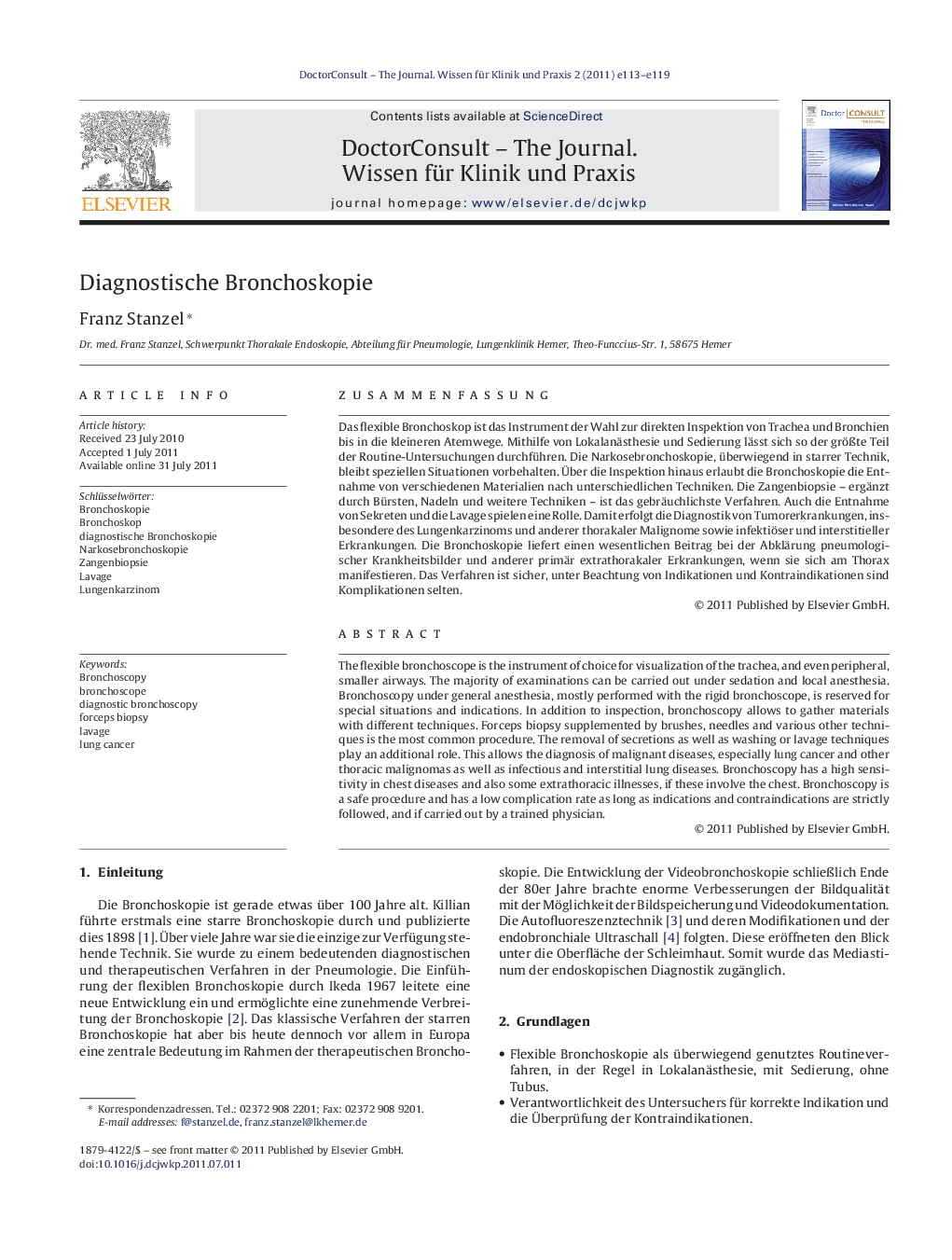| Article ID | Journal | Published Year | Pages | File Type |
|---|---|---|---|---|
| 3464881 | DoctorConsult - The Journal. Wissen für Klinik und Praxis | 2011 | 7 Pages |
ZusammenfassungDas flexible Bronchoskop ist das Instrument der Wahl zur direkten Inspektion von Trachea und Bronchien bis in die kleineren Atemwege. Mithilfe von Lokalanästhesie und Sedierung lässt sich so der größte Teil der Routine-Untersuchungen durchführen. Die Narkosebronchoskopie, überwiegend in starrer Technik, bleibt speziellen Situationen vorbehalten. Über die Inspektion hinaus erlaubt die Bronchoskopie die Entnahme von verschiedenen Materialien nach unterschiedlichen Techniken. Die Zangenbiopsie – ergänzt durch Bürsten, Nadeln und weitere Techniken – ist das gebräuchlichste Verfahren. Auch die Entnahme von Sekreten und die Lavage spielen eine Rolle. Damit erfolgt die Diagnostik von Tumorerkrankungen, insbesondere des Lungenkarzinoms und anderer thorakaler Malignome sowie infektiöser und interstitieller Erkrankungen. Die Bronchoskopie liefert einen wesentlichen Beitrag bei der Abklärung pneumologischer Krankheitsbilder und anderer primär extrathorakaler Erkrankungen, wenn sie sich am Thorax manifestieren. Das Verfahren ist sicher, unter Beachtung von Indikationen und Kontraindikationen sind Komplikationen selten.
The flexible bronchoscope is the instrument of choice for visualization of the trachea, and even peripheral, smaller airways. The majority of examinations can be carried out under sedation and local anesthesia. Bronchoscopy under general anesthesia, mostly performed with the rigid bronchoscope, is reserved for special situations and indications. In addition to inspection, bronchoscopy allows to gather materials with different techniques. Forceps biopsy supplemented by brushes, needles and various other techniques is the most common procedure. The removal of secretions as well as washing or lavage techniques play an additional role. This allows the diagnosis of malignant diseases, especially lung cancer and other thoracic malignomas as well as infectious and interstitial lung diseases. Bronchoscopy has a high sensitivity in chest diseases and also some extrathoracic illnesses, if these involve the chest. Bronchoscopy is a safe procedure and has a low complication rate as long as indications and contraindications are strictly followed, and if carried out by a trained physician.
